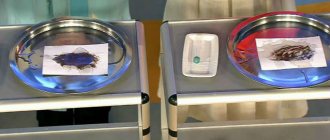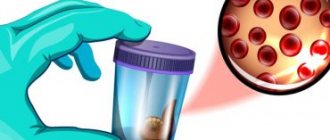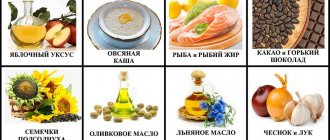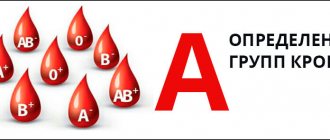Release form and composition
Dosage form - emulsion for intravenous administration: after thawing - transparent, with a bluish tint, odorless (50, 100, 200 or 400 ml in glass bottles, sealed with rubber caps, crimped aluminum caps).
100 ml of emulsion contains:
- Pfocalin – 13 g;
- Pforidin – 6.5 g;
- Proxanol – 4 g;
- Sodium chloride – 0.6 g;
- Glucose – 0.2 g;
- Sodium bicarbonate – 0.065 g;
- Potassium chloride – 0.039 g;
- Magnesium chloride – 0.019 g (in terms of dry matter);
- Sodium phosphate monosubstituted – 0.02 g.
Excipient: water for injection.
Indications for use
- Acute and chronic hypovolemia (due to traumatic brain injury, hemorrhagic, infectious-toxic, burn or traumatic shock, as well as surgical and postoperative hypovolemia);
- Impaired microcirculation and peripheral circulation (with infections, fat embolism, cerebrovascular accident, purulent-septic conditions, changes in gas exchange and tissue metabolism);
- Regional perfusion;
- Lung lavage;
- Purulent wounds of the abdominal and other cavities;
- Anti-ischemic protection of donor organs (preliminary preparation of the recipient and donor).
Perftoran is back
The Soviet blood substitute will again be produced in Russia
Varvara Fufaeva, Vademecum No. 9-2016
The blood substitute Perftoran, which is planned to be used during the world's first head transplant operation, will begin to be produced in Russia by the end of the year, and in the future – exported to other countries. The legendary “blue blood” drug, created by Soviet biophysicists, was decided to be brought back to the market by the founder and former owner of the Lenta retail chain, and now the general director of the Solopharm company, Oleg Zherebtsov.
Perftoran received a registration certificate for production and sale in Russia on April 27, 2021. The registration holder, according to the State Register of Medicines, was Grotex LLC, which owns the St. Petersburg pharmaceutical plant Solopharm. The head of the enterprise, Oleg Zherebtsov, confirmed to Vademecum that he had acquired a patent for the drug, technological know-how, and by the end of the year he plans to launch its production at his own facilities.
Perftoran is known on the market for its scandalous history of invention. It was created in the 1980s by biophysicist Felix Beloyartsev. The professor was promised a State Prize and world recognition for the formula, which he never received and committed suicide. The fate of the invention itself was no less dramatic. For more than ten years, until the end of the 1990s, it left the market, experienced a change of patent holders, and then a surge and a sharp decline in sales. According to DSM Group, sales of the drug in Russia in 2015 fell to 11.4 million rubles compared to 24.5 million rubles in 2014.
Until the end of 2015, sales and development of Perftoran in Russia were handled by NPF Perftoran OJSC. In March 2015, the Federal Tax Service of Russia filed a claim with the Arbitration Court of the Moscow Region demanding that this company be declared bankrupt, but the arbitration court rejected it. Although a year before this, negotiations were held on the sale of licenses and technologies belonging to Perftoran to Oleg Zherebtsov’s company Grotex.
“The company found itself in a situation that excluded the possibility of further production,” says Zherebtsov. – Most of the premises were badly worn out and did not meet GMP standards. We bought the registration certificate, the right to manufacture, the necessary licenses and technological know-how.” The drug was absent from the market for about six months, until the entrepreneur decided to resume its sales.
It was not possible to contact representatives of NPF Perftoran OJSC Vademecum.
In the first year, Zherebtsov plans to put 50 thousand 200 ml packages of the drug on the market and expects to increase production capacity tenfold in 5 years.
Zherebtsov estimates the cost of transferring the production of Perftoran to Solopharm facilities at 56 million rubles - these funds will be used for pilot tests, launch and equipment of production, purchase of new homogenizers and substances.
The selling price of the package is expected to be about 8 thousand rubles, and, therefore, by 2021 the sales volume of Perftoran could reach 50 million euros.
Zherebtsov is aimed primarily at the hospital segment of the market and intends to supply the drug to surgical departments of clinics in St. Petersburg, Moscow, as well as distribution companies in Rostov, the south of Russia and other regions. “These are sales to hospitals, and to oncology centers, and to centers for performing operations on the lungs, kidneys, liver, where rapid restoration of organs after surgery is required. The drug can be used almost immediately in oxygenators. Since it has good gas transport functions, its drop is 70 times smaller than a red blood cell, which carries oxygen, and, therefore, penetration into the farthest capillaries of the body is high,” the entrepreneur praises the product he has revived. In the future, Solopharm expects to supply the hemotherapy to the foreign market. “We know that some states are already interested in this product,” says Zherebtsov. “For example, the Mexican Ministry of Defense registered Perftoran in its country many years ago, and is now trying to achieve the GMP standard to start production.”
Experts have mixed feelings about the drug's re-entry into the market. Emergency physician Andrei Zvonkov, who headed the blood service at MK CELT from 1994 to 2011, says that a blood substitute does not solve all the problems of large blood loss in emergency conditions: “There is always very little time to save the patient. Unfortunately, organofluorine does not solve this problem, and if it is possible to stop the patient’s bleeding with a tourniquet or a pressure bandage, provide him with rest, let him breathe oxygen and at least give him warm salted and slightly sweetened water, then this will be better than perfluorocarbons.” At the same time, the heads of two cardiac surgery departments at large Russian medical centers told Vademecum that they would be willing to use blood substitutes during operations with artificial circulation.
Zherebtsov successfully chose the moment to relaunch Perftoran - Italian surgeon Sergio Canavero plans to use the drug during a transplant of the head of Russian programmer Valery Spiridonov, who suffers from spinal muscular atrophy, planned for December 2021.
The drug will have to help the surgeon and his colleagues cope with the large-scale blood loss that will inevitably occur during surgery.
In an interview with Vademecum, Spiridonov confirmed that the surgical team is already actively using the blood substitute Perftoran, conducting head transplant experiments on animals, and Fr.
Preparations for the operation are widely covered in Russian and international media, which will help give Perftoran good advertising.
What are blood substitutes?
Blood substitutes are sterile liquids that replace blood and plasma, which are used in case of large blood losses to restore the volume of circulating blood.
World hematology has been working toward the creation of blood substitutes for more than a hundred years. At the beginning of the 19th century, the basis of this trend was the transfusion of human donor blood, then saline solutions appeared that replenish the volume of blood, but do not carry oxygen. Finally, in the mid-twentieth century, the development of a whole range of drugs began, replacing individual blood components (erythrocytes, platelets, plasma), and then hemochemicals with a gas transport function, transferring oxygen to blood vessels and capillaries narrowed after injury or surgery.
Since the beginning of their history, blood substitutes have been considered very promising products. The developers believed that hemotherapy products have a number of advantages over donor blood - they are suitable for all recipients, regardless of group and Rh factor, neutralize the risks of transmitting the hepatitis C virus or AIDS to the patient, and can be stored for a long time.
Blood substitutes with a gas transport function, to which Perftoran belongs, are aimed at situations of large-scale blood loss - extensive interventions in cardiovascular surgery, traumatology, orthopedics, as well as extreme, catastrophic and military medicine.
Another target audience of the drug is Jehovah's Witnesses, for whom religious tenets do not recommend transfusion of donor blood, so in some cases blood substitutes are the only alternative for them. “Often, surgeons and anesthesiologists themselves insist on using a blood substitute. These drugs do not contain any blood fractions, so most believers agree to use this drug in their treatment,” confirms Mikhail Panichev, a member of the hospital liaison committee for Jehovah’s Witnesses. According to him, in Russia in 2015 the confession numbered 175,615 “publishers.” The number of adherents of the faith in the world is estimated at approximately 8 million people.
However, despite a potentially large market, these drugs have not become widespread. It is enough to note that the FDA has not yet issued a single permit for the sale of blood substitutes in the United States. If Solopharm does not abandon its plans, then Perftoran will become the only drug of this type approved in Russia. Blood substitutes, developed since the 1980s, are still not welcomed by all anesthesiologists and transfusiologists.
Who invented and brought to market the blood substitute Perftoran?
In domestic transfusiology, the topic of blood substitutes was first raised in the 1970s, when Soviet scientists received information that their colleagues around the world were conducting research on drugs based on perfluorocarbon emulsions. The country's political leadership hoped that the creation of such a drug would raise the stakes of the Soviet state in the technology race with the West, and ordered the USSR Academy of Sciences to take up the issue. Another motive for intensifying the development of Perftoran is considered to be the beginning of the war in Afghanistan. Research in this direction was simultaneously started by the Moscow and Leningrad Institutes of Hematology and Blood Transfusion, and then by the Institute of Biophysics of the USSR Academy of Sciences, headed by the famous Soviet hematologist Heinrich Ivanitsky. Practical work on perfluorocarbon emulsions was led by Professor Felix Beloyartsev, head of the institute’s medical biophysics laboratory.
In the early 80s, a unique hemopreparation was obtained. For its heavenly color, it received the name “blue blood” in the Soviet and then international scientific community. The inventor of Perftoran, Felix Beloyartsev, was promised a State Prize and inevitable international recognition. In 1984, the Pharmaceutical Committee of the USSR Ministry of Health authorized the first, and a year later, the second phase of clinical trials of Perftoran, during which material was collected on the use of the drug in 234 patients in 19 nosological areas. But in 1985, CI blood substitutes were suddenly banned, and Professor Beloyartsev was removed from running the laboratory and general scientific work. Searches were carried out at the inventor's dacha, after one of which the scientist committed suicide; according to the official version, he hanged himself.
Beloyartsev’s leader, Genrikh Ivanitsky, in an interview with the Kommersant newspaper in 1998, described these events as follows: “Then there was a struggle for power at a high level: posts in the Presidium of the Academy of Sciences, positions in the Central Committee were divided... The struggle was serious, and the next hierarchical levels, of course, were drawn into this struggle. In this story, we - those who worked on Perftoran - turned out to be the third echelon, which did not seek to join any groups. So Perftoran turned out to be a reason to put us in our place and demonstrate “who is the boss here.” Commissions from the Ministry of Health and the Presidium of the Academy of Sciences rained down... Beloyartsev could not withstand the psychological pressure... The KGB developed a whole system of how to drive a person to suicide. Yes, he had violations of instructions, a difficult family situation, but he was sure that he was engaged in the most important state business, and he was reduced to the level of a criminal. There were rumors of medical experiments on humans. Ultimately, he was removed from office and accused of “abuse of office” and “violation of alcohol consumption reporting.” Beloyartsev was ready for the State Prize, but received the status of a potential criminal. It was incredible stress, and he broke down - he hanged himself in his dacha after the investigators left. The onslaught of KGB men was very strong. He just couldn't stand it."
By the 90s, passions around the ban on Perftoran and the death of its creator had subsided, but then perestroika began and, as Ivanitsky later explained in his memoirs, the Institute of Biophysics did not have the resources to resume work on the drug and put it into circulation. So Perftoran dropped out of the pharmaceutical and medical field for 11 years.
In the mid-1990s, Ivanitsky and his colleagues created OJSC NPF Perftoran on the basis of the academic institute. In February 1996, Perftoran emulsion was registered in the Russian Federation and approved for medical use and industrial production in containers of 100 and 200 milliliters. The indications for use then included acute and chronic hypovolemia, microcirculation and peripheral circulation disorders, purulent-septic conditions, cerebral circulatory disorders, fat embolism and preliminary preparation of donors. In numerous interviews, Ivanitsky stated that, finally, after tragic events and trials, Perftoran found a new life. And in fact, in subsequent years, his company's business went uphill. In his memoirs, one of the employees of the NPF Perftoran, Sergei Vorobyov, said that in 1999, the release of the drug was blessed by the Patriarch of Moscow and All Rus' Alexy II. And in 2002, the group of creators of Perftoran was awarded the “Calling” prize, its leader Felix Beloyartsev - posthumously.
Sales of the drug were growing: according to SPARK-Interfax, in 1999 the revenue of NPF Perftoran was 2.2 million rubles, and by 2007 it reached 34.5 million rubles.
The commercial success of the blood substitute was also facilitated by the transition of transfusiology to a new paradigm - from component hemotherapy to drug transfusiology, one of the apologists of which was the head of the department of clinical transfusiology at First Medical University, Aliheydar Ragimov. “Blood products are stored much longer, they are easier to transport, monitor their effectiveness, etc. Obviously, over time, medicine will gradually switch to the use in clinical practice of drugs that allow the missing link in the patient’s peripheral blood to be adequately replenished,” Professor Ragimov explains the emergence of the trend.
The decline in sales of Perftoran began during the last crisis: the manufacturer’s revenue, according to SPARK-Interfax, by 2014 fell from peak values by more than two times - to 13.7 million rubles. However, until recently, the drug remained in demand both in the hospital and retail segments: according to DSM Group, the total volume of government purchases of Perftoran in the period from 2010 to 2015 amounted to 82.2 million rubles versus 55.4 million rubles in pharmacy chains.
Experts attribute the drop in popularity and commercial success of the drug to the identification of numerous side effects, including hyperemia, hyperthermia, tachycardia, hypotension, headache, pain in the chest and lumbar region, difficulty breathing, and allergic reactions. Chief transfusiologist of the Federal State Institution “National Medical and Surgical Center named after N. I. Pirogov” Evgeniy Zhiburt notes that multicenter, randomized controlled clinical trials have not been conducted for Perftoran. Sergei Vorobyov, who left the academic laboratory and the company in the late 90s, indirectly points to the same problem in his memoirs: “In 1997, OJSC NPF Perftoran acquired commercial structures that had nothing to do with pharmaceuticals and medicine. For a number of reasons related to fundamental disagreements with the new owners of the company, who curtailed all research work aimed at creating promising, safe perfluorocarbon drugs, the author of these lines was forced to leave first the Scientific and Production Company "Perftoran" in 1997, and then from the ITEB RAS in 1999".
According to SPARK-Interfax, during the period described by Vorobyov, the company’s board of directors included five entrepreneurs: Natalya Galushkina, Yuri Dzitovetsky, Igor and Elena Maslennikov, and Alexey Stashkov. It was not possible to contact any of the participants in the events of that time Vademecum at the time of signing the issue.
But the head of Solopharm, Oleg Zherebtsov, saw commercial prospects in Soviet developments. “In the Soviet Union there was a culture of donation. And now in Russia there is not enough clean and tested donor blood. Due to the large number of viruses identified over the past 15 years, we see that in many cases the blood is unsuitable, financial compensation for it is pitiful, and quality control requires much more costs than the cost of the blood itself,” says the entrepreneur. What other blood substitutes have tried to enter the Russian market? The fate of other blood substitutes that have tried to enter the Russian market in the last five years has been unenviable. In the early 2000s, Evgeniy Selivanov, director of the Russian Research Institute of Hematology and Transfusiology, corresponding member of the Russian Academy of Medical Sciences, created the drug Gelenpol. The blood substitute underwent clinical trials, appeared in the hands of transfusiologists at scientific conferences and went for further development to the Obninsk Science City, where it was taken up by the research and production department, which was going to invest $6 million in construction.
The main investor of the project was the general director of NPK Medbiopharm, Rakhimdzhan Roziev, who took as a partner in Gelenpol LLC academician of the Russian Academy of Medical Sciences Anatoly Tsyb, the father of the current Deputy Minister of Industry and Trade Sergei Tsyb. Now Gelenpol LLC does not exist, and the drug of the same name has never been registered. Rakhimdzhan Roziev refused to comment on the Vademecum story from ten years ago.
Another drug of this series, Hemopure, was tried to be introduced to the Russian and world markets by the notorious entrepreneur Sergei Pugachev, but this hemopreparation also left the market last year.
Despite all the apparent failures, Aliheidar Ragimov, head of the department of clinical transfusiology at First Medical University, believes that blood substitutes still have a future: “The fundamental difference between such drugs and blood components is that any blood product has an active substance that can be measured. In a component, as in living tissue, this parameter is, firstly, dynamic, and secondly, it is polycomponent, and during transfusion, many different molecules exhibit biological activity. Thirdly, any component is unique, since it was obtained from an individual blood donor, but in the preparation the bioactivity is standardized as much as possible and the entire period of suitability is constant and predictable.”
A similar point of view on blood substitutes is shared by scientists from Tomsk State University, who are now working on developing a component for the production of modified hemoglobin with a gas transport function. One of the project participants, Vyacheslav Butikov, told Vademecum that the drug will be based on the biomass of annelids, but did not talk about the commercial component of the endeavor.
The chief transfusiologist of the National Medical Clinical Center named after N.I. does not agree with these experts. Pirogova Evgeny Zhiburt. He doubts that blood substitutes will be in demand on the market, noting that the situation with blood replacement in the industry is improving. In July 2012, a new federal law “On the donation of blood and its components” was adopted, providing for annual monetary compensation to honorary donors. In 2021, it amounted to 12,373 rubles. According to the Ministry of Health, for 6 months of 2013, the total number of donors increased by 3% compared to the same period in 2012.
Portal “Eternal Youth” 05/19/2016
Directions for use and dosage
Perftoran is intended for intravenous (IV) administration.
Before using the drug, the doctor conducts a biological test: slowly injects 5 drops of the drug, takes a 3-minute break, then injects another 30 drops and again takes a 3-minute break. If there are no adverse reactions, administration is continued.
Before infusion, the doctor conducts a visual inspection of the drug. It is considered suitable for use if there are no cracks on the bottle, the closure is sealed and the label is intact.
The doctor records the data from the Perftoran label (name, manufacturer, batch number) and visual inspection of the bottles, as well as the results of the biological test in the medical history.
Recommended application regimens:
- Acute blood loss and shock: intravenous drip or jet at a dose of 5-30 mg/kg. The maximum effect can be achieved if the patient breathes an oxygen-enriched mixture during the infusion and for 24 hours after it;
- Microcirculation disorders: a single dose is 5-8 ml/kg. The drug can be re-administered at the same dose 3 times at 2-4 day intervals. To improve the oxygenation effect during treatment, it is recommended to supply an oxygen-enriched air mixture through a nasal catheter or mask;
- Anti-ischemic protection of donor organs: intravenous drip or jet to the recipient and donor at a dose of 20 ml/kg 2 hours before surgery;
- Regional use: for perfusion of extremities when filling a standard oxygenator at a dose of 40 ml/kg;
- Topical application: similar to traditional drug therapy.
Clinical trials of perftoran (PF) in Russia began in 1984. Phase 3 clinical trials and additional trials for individual indications were completed. Perftoran has been registered and officially used in the clinic since 1996. PF or the so-called “blue blood” - a blood and plasma substitute with a gas transport function - has a multifunctional effect.
The main aspects of the action are as follows:
1.Improving the delivery of oxygen from the alveoli to erythrocytes and from erythrocytes to tissues. 2.Improving metabolism and gas exchange at the tissue level. 3. Restoration of central hemodynamics. 4.Improving blood flow up to peripheral microcirculation. 5. Distinct cardioprotective effect. 6. Activation of the detoxifying function of the liver. 7. Membrane stabilizing effect. 8.Has sorption and diuretic properties. 9. Immunomodulatory effect
Pharmacokinetic features of the drug:
All components of PF are chemically inert and do not undergo metabolic transformations in the body. The half-life of perfluorocarbon emulsions from the bloodstream is 20-30 hours. The half-life of a surfactant from the bloodstream is approximately 6 hours. The surfactant is excreted through the kidneys. More than 90% of perfluorocarbons are excreted through the lungs, a small part through the skin, from the liver with bile, and about 1% through exocytosis. Temporarily, 20-30% of perfluorocarbons are accumulated by macrophages.
Indications for use of PF
As a blood substitute with the function of transporting oxygen and carbon dioxide to reduce the cost of donor blood and red blood cells as an anti-shock, anti-ischemic and cardioprotective agent
1. in urgent situations: - with traumatic, hemorrhagic, burn, cardiogenic, infectious-toxic shock; - in comatose states of various origins (be it cerebral coma due to TBI, stroke; hepatic coma as a result of viral or toxic hepatitis, cirrhosis; renal coma as a result of acute or chronic renal failure); - with blood loss, both acute (wound, traumatic, operating) and chronic, accompanied by severe hypovolemia; - in purulent-septic conditions and severe infectious diseases with the simultaneous use of powerful antibiotics, drainage and sanitation of foci of infection; - with the threat of development and already developed embolism (thromboembolism, fat embolism), disseminated intravascular coagulation syndrome, respiratory distress syndrome; - for burn disease; 2. For combined polytraumas leading to the development of one or another urgent situation. 3. For open heart surgery using a heart-lung machine (CAB), for coronary artery bypass grafting, for cardioplegia during reconstructive operations on the heart and blood vessels. 4. In transplantology to protect donor organs before, during and after transplantation. 5. In the clinic of internal diseases - in cardiac patients (in the acute stage of myocardial infarction); - for vascular and inflammatory diseases of the brain; - for vascular diseases of the extremities; - for diseases of the gastrointestinal tract (erosive gastroduodenitis, peptic ulcer of the stomach and duodenum); 6. In case of severe complicated course of various infectious diseases (viral hepatitis, abdominal, typhus, relapsing fever, fever, meningo-encephalitis), with AIDS. 7. In psychiatry for the relief of delirium tremens and acute psychoses. 8. For oncological diseases, both during surgical treatment and to reduce the adverse effects of radiation and chemotherapy. 9. In toxicology in case of poisoning with neurotropic and hepatotropic poisons to reduce the phenomena of endotoxicosis. 10. For local use: - regional perfusion; - lung lavage; — washing of trophic, purulent and burn wounds; — irrigation of cervical erosions; - per os and through a tube for erosive gastritis and massive gastric ulcers and 12pcs; — washing of the pleural and abdominal cavities during surgical treatment. 11. Liquid perfluorocarbons have found wide application in eye microsurgery.
Page 30
Doses and methods of administration of perftoran
PF is administered intravenously by stream and drip at a rate of 1 to 30 ml per 1 kg of weight (and more in case of acute massive blood loss). It is possible to re-administer the drug in the same dose at intervals from several hours (in case of massive blood loss) to 3 days, depending on the patient’s condition, the results of the administration of previous doses and the type of pathology, unless this is a surgical intervention accompanied by premedication and anesthesia. Before administering the main amount of the drug (if there is no premedication or anesthesia), a biological test is necessary: after administering the first 5 - 30 drops of PF, you need to take a break for 15 - 20 minutes to identify possible anaphylactoid reactions. In the absence of the latter, you can continue the infusion at an arbitrary pace, on average at a rate of 40-60 drops per 1 minute.
Undesirable side effects of PF
When administering a test dose, some people may experience headache, dizziness, chest pain, difficulty breathing, cough, pain in the lumbar region, itching, chills; hyperemia of the face and skin of the body, increased temperature, increased heart rate, decreased blood pressure. If these phenomena do not go away spontaneously within 10-15 minutes, then it is better to discontinue the drug or administer PF under the cover of antiallergic drugs. In case of a weakly expressed vascular vasomotor reaction that spontaneously passes within 10 - 15 minutes in the form of slight redness of the skin, mild rash, scratching of the nose, dizziness, slight tachycardia up to 90 beats per minute, increased intestinal motility, the administration of the drug should be continued, but in a slow manner pace (20-30 drops per minute). possible and necessary The frequency of adverse reactions when administering PF depends on the type of pathology. No one has registered any adverse reactions in polytrauma, blood loss compensation, cardiodioplegia, or in transplantology. In “therapeutic” situations, the percentage of adverse reactions ranges from 1.8% to 15% and depends on the type of pathology, preliminary selection of patients, compliance with the rules and storage periods, defrosting technology and the number of repeated freezing of the drug, and on compliance with precautions when administering PF.
Contraindications
Contraindications for the administration of the drug are: individual intolerance, hemophilia (since there are no comprehensive studies on the effect of PF on hemostasis), the first two thirds of pregnancy (in the absence of vital indications). We also consider a relative contraindication if the patient has a history of autoimmune diseases and severe hysteria.
Precautionary measures when administering perftoran.
PF cannot be administered in the same system, or in the same syringe, or in the same AIK with dextrans (polyglucin, rheopolyglucin), hydroxyethyl starch with a molecular weight of more than 100,000 Da. These drugs should be administered after the end of the PF infusion or, if simultaneous administration is necessary, into another vein. PF is compatible with donor blood, components of donor blood, albumin, isotonic saline solutions, glucose, AB, antispasmodics, analgesics, cardiotonic drugs, known blood substitutes such as mafusol, polyoxidine.
Release and storage form
PF is available in the form of an odorless, white emulsion with a bluish tint, in glass bottles of 100, 200 and 400 ml. It is planned to produce smaller volume bottles for use in pediatrics and geriatrics. The drug must be stored frozen at temperatures from -4 to -18oC. The shelf life when frozen is 3 years; when thawed at a temperature of +4 oC, it is advisable to store the drug for no more than two weeks. It is important to follow the technology for defrosting the drug; in particular, you should not sharply change the temperature regime: 12 hours before the intended use, the bottle with PF is transferred from the freezer to the refrigerator at a temperature of +4 oC, then the drug is “warmed up” immediately before use to the temperature of the intended administration in warm water or an oxygenator (+ 14 oC is required for hypothermic cardioplegia, +24-26 oC for general hypothermia, +33-36 oC for normothermic use). It is not recommended to shake the bottle sharply, which must be taken into account both during transportation and when defrosting the drug. Thawed PF is stored at a temperature of +4oC if it is intended to be used within the next 2 weeks. We believe that refreezing the drug should not be more than 3 times.
Advantages of PF over donor blood, plasma and blood components
1.PF is suitable for patients with any blood group and any Rh factor. 2.The possibility of transferring infectious and viral diseases is excluded. 3. The consumption of donor blood in case of massive blood loss is significantly reduced. 4. Long-term storage of the drug and its factory production in the required quantities are possible, regardless of the availability of biological donors. 5. Delivery of oxygen to places inaccessible to red blood cells through spasmodic and narrowed vessels. By the way, it is precisely this property of PF that allows one to avoid the development or reduce the manifestation of respiratory distress syndrome.
Page 34
Some specific examples of the effectiveness of PF when used in the clinic.
Compensation for acute massive blood loss (25% or more of the total blood volume). PF is administered drip and stream, intravenously and even intravenously. If the patient’s condition allows, a biological test is carried out; if the patient’s condition is critical, premedication is given (glucocorticosteroids, antihistamines, Ca drugs, sedatives), and cardiotonic drugs are also available. The volume of injected PF is 10-15% greater than the volume of blood loss if only PF is replaced. If there is simultaneous replacement of blood loss with polymer plasma substitutes (dextran, albumin, hydroethyl starch), then they are administered through another system into the other arm or after completion of the administration of PF. In this case, the amount of administered PF will be 50-60% of the volume of blood loss, and the volume of polymer plasma substitutes will also be 50-60%. With massive blood loss of more than 30% of the total blood volume, it becomes necessary to also use whole blood. Compensation for blood loss begins with the introduction of PF in a volume of 40-50% of the volume of blood loss, then or in parallel, a plasma substitute is injected into the other arm in the same volume, and then donor blood or red blood cells are injected; in this case, the required amount of donor blood is reduced by 2-3 times. If bleeding continues, platelet mass is also administered. PF can be re-introduced depending on the patient’s condition and replenishment of blood loss. In case of polytrauma with massive blood loss, we have experience in administering up to 5.4 liters of PF to the patient. There are many examples of the introduction of PF on the battlefield in an amount of 1.2 liters with blood loss up to 50% of the blood volume - these are cases during the war in Afghanistan in 1985-86. In this situation, in addition to 1.2 l of PF, 1.2 l of blood and up to 1 l of polyglucin were administered. In this case, the oxygen content in the inhaled air mixture (Fi O2 indicator) is made equal to 0.4 - 0.6 (40 - 60 vol.% oxygen). I would like to remind you that after the introduction of PF, the alveolar-arterial O2 gradient decreases, which is very important for preventing the development and reducing the manifestation of respiratory distress syndrome.; — central hemodynamics improves (min. volume increases due to increased stroke volume of the heart and improved functioning of the left ventricle; blood pressure increases; pressure in the pulmonary artery decreases; venous pressure decreases); - improves cerebral and renal blood flow; — peripheral blood flow and tissue microcirculation improves; — acidosis is reduced (by improving the delivery of oxygen to tissues and the intake of carbon dioxide from them); — oxygen delivery by erythrocytes improves, which leads to a decrease in peripheral vascular resistance and normalization of the arteriovenous difference in pO2 and pCO2.
Use of PF in the treatment of obliterating vascular lesions of the extremities.
Due to the ability of PF to improve microcirculation and rheological properties of blood, relieve spasms, improve oxygen delivery by red blood cells and pass through narrowed vessels where red blood cells themselves cannot pass, PF has found application in vascular lesions of the extremities.
With this pathology, the first priority comes to the problem of selecting patients based on medical history (absence of allergic and autoimmune diseases) and the mandatory conduct of a biological test. The presence of minor vasomotor reactions listed above, which disappear after 10-15 minutes, is not a contraindication for the administration of PF. To date, more than 350 patients with obliterating atherosclerosis have been treated, 180 of whom have been treated for over 4 years. Order of introduction.
On the first day - 300 - 400 ml IV, drip. During administration, the patient can be given to breathe an air-oxygen mixture with an O2 content of 40 - 60%. Repeated administration of the same dose is indicated after 1 - 3 days, 1 - 2 times. The results of treatment are assessed by changes in well-being and by objective data, in particular by increasing the distance that the patient can walk without pain; according to a transcutaneous sensor that records pO2 on the skin and in the underlying tissues, according to thermal imaging and Doppler measurements. PF courses can be repeated every 2-3 months. To date, four years of experience in treating patients with stage 11 obliterating atherosclerosis have been accumulated. according to Fontaine. In several patients with 111 st. The disease was successfully canceled or surgical treatment was postponed. The percentage of severe anaphylactoid reactions, due to which the use of PF had to be discontinued, in this group of patients was equal to two.
Page 35
Application of PF in cardiac surgery.
The greatest experience in the use of PF in cardiac surgery has now been accumulated at the Institute of Surgery named after. Vishnevsky, Institute of Cardiovascular Surgery named after. Bakulev, at the Transplantation Center with V.I. Shumakov and at the Military Medical Academy of St. Petersburg. PF has been used in reconstructive surgeries on the heart and blood vessels using AICA for perfusion preservation of the heart, for cardioplegia only PF and PF together with conventional crystalloid compounds. When only PF is used for cardioplegia, its salt composition is adjusted by adding salts and substrates to a cardioplegic composition. If PF is used as a component, then it is diluted with a cardioplegic composition in a ratio of 1:1 to 1:3. The positive effect is more pronounced when using a solid PF and consists of a 2-3 fold increase in the time between perfusions; — when the heart is connected to the bloodstream, spontaneous (independent) restoration of electrical and contractile activity is observed (a defibrillator had to be used in isolated cases); — arrhythmia rarely developed, and the level of contractile activity was always higher when using PF; - due to the selective blocking of the incoming calcium current, the level of contracture was lower, accordingly the diastolic pressure in the aorta was lower due to a more complete diastole, and the systolic pressure was higher; — secondary development of heart failure when using Pf was usually minimal.
PF in the treatment of acute myocardial infarction.
(Used by the Dagestan Medical Academy, Makhachkala and Dnepropetrovsk Medical Academy, Ukraine, Military Medical Academy in St. Petersburg). PF was used in patients with myocardial infarction in the acute stage. The first infusion of the drug was given 30-60 minutes after the development of a heart attack, the second infusion was given the next day, and, if necessary, on the 3rd day. The amount of drug administered was determined at the rate of 1.5-2 ml per kg of patient weight. PF was administered intravenously, by drip. The total amount for a single administration did not exceed 100 ml. Before the administration of PF, patients were given premedication (50 mg of pipolfen and 30-60 mg of prednisolone). After infusion of 5-10 drops of PF, a break was taken for 3-5 minutes to identify a hidden allergic reaction; in the absence of the latter, the drug was administered at a rate of 40-60 drops per minute. With more forced administration, patients may experience tachypnea (shortness of breath), tachycardia (palpitations), and decreased blood pressure. Allergy sufferers have bronchospasm. The effectiveness of PF was assessed by the well-being and clinical condition of the patient; parameters of central hemodynamics, ECG, respiratory function, capnography, biochemical and coagulation parameters of blood were studied. The studies were carried out immediately after administration and on the third day. The examination results showed that after administration of the drug, the pain syndrome decreases, the patient’s well-being improves, on the second day there is a positive ECG dynamics, and blood rheology improves (fibrinogen levels decrease, PTI decreases). Due to the decrease in preload, the central venous pressure decreases; due to the decrease in afterload, the resistance to blood ejection from the ventricles decreases, and the peripheral vascular resistance decreases. If the beginning of PF infusion is usually accompanied by some increase in heart rate (110-120 beats per 1 min.) and respiration (19-25 per 1 min.), then subsequently these indicators level out to normal numbers. Blood pressure fluctuates slightly. The SV of the heart and SI (stroke index), MOS (cardiac minute volume) and CI (cardiac index) increase. The total and specific peripheral resistance decreases, and the central venous pressure decreases. All this undoubtedly indicates an improvement in heart function and has a beneficial effect on the course and outcome of the disease. The recovery period of patients with AMI who received PF in the acute period is reduced. Comparison of ECG and ultrasound data in patients receiving PF and patients in the control group reveals a decrease in the necrosis zone by 2.5 times.
A separate message can be devoted to the use of PF in transplantology.
PF was used mainly in kidney and testicular transplantation to improve both the quality of the graft and its safety. An agonizing donor, in whom brain death was recorded “perfectly”, was connected to a heart-lung machine and injected with up to 2 liters of PF, then polyglucin was added and the donor’s body was perfused for approximately two hours, and only then the necessary organs were removed. The organs taken in this way were distinguished by their high preservation and good survival rate, even in the case when the time of organ collection was two days behind the time of transplantation. Once connected to the recipient's bloodstream, the kidney immediately produced urine. The indicators of residual nitrogen, creatinine, and urea were restored 2-3 times faster than when using other sampling methods. When a kidney is transplanted, practically no PF enters the recipient's body, but if about 400 ml of PF is administered to the recipient after transplantation, this improves the condition of both the patient and the transplant, even if the kidney is prepared in the usual way. I would like to draw your attention to the fact that if, during perfusion of the PF of the body of the intended donor, the kidney does not produce urine after 1.5-2 hours, while still in the donor’s body, there is no point in transplanting it. This sign is used as a prognostic test. An example of the unsuccessful use of kidneys is two attempts at kidney transplantation from patients over 70 years of age who died from hemorrhagic stroke. We can talk about many other, less numerous observations of the general and local use of PF. Currently, the Pharmacocommittee has already approved the use of PF as a means of activating the detoxifying function of the liver. We will try to cover the use of PF in other clinical situations in subsequent reports.
Used Books.
1. Physiological activity of fluorine-containing compounds (experiment and clinic). Pushchino Scientific Center. Institute of Theoretical and Experimental Biophysics RAS. Pharmaceutical company ..Pushchino, 1995, 246 p. 2.Perfluoroorganic compounds in biology and medicine. Pushchino, 1997, 250 p. 3.Perfluoroorganic compounds in biology and medicine. Pushchino, 1999, 286 p. 4.Perftoran in intensive care of critical conditions. Guidelines. Dnepropetrovsk, 2000, 40 p. 5.Physiologically active substances based on perfluorocarbons in military medicine. All-Army Scientific Conference October 8-9, 1997. St. Petersburg, 1997, 152 p. 6.Physiologically active substances based on perfluorocarbons in experimental and clinical medicine. All-Army Scientific Conference September 23-24, 1999. St. Petersburg, 1999, 121 p.
Page 36
Side effects
Perftoran is generally well tolerated. In some cases, the following side effects occur:
- Allergic (redness of the skin, itching and urticaria) and anaphylactoid reactions;
- Decreased blood pressure, increased heart rate, chest pain, difficulty breathing;
- Headache, increased body temperature;
- Pain in the lumbar region.
If the described reactions occur or if complications occur, it is necessary to immediately stop the infusion and, without removing the needle from the vein, depending on the clinical picture, administer desensitizing, vasopressor, glucocorticosteroid, cardiotonic and/or other drugs used in the treatment of anaphylactic shock.








